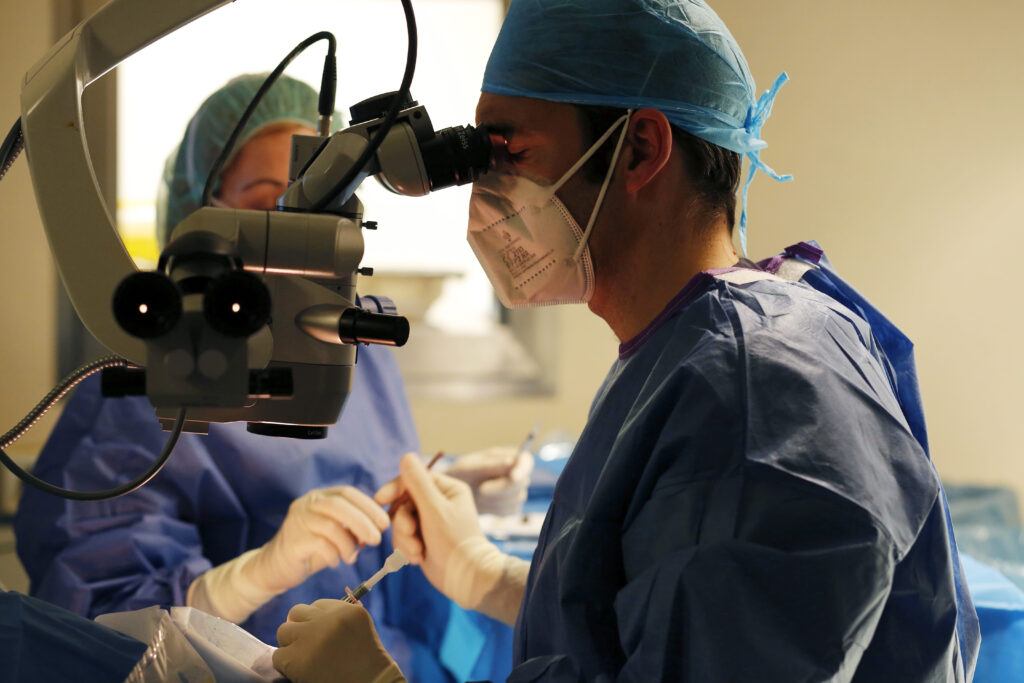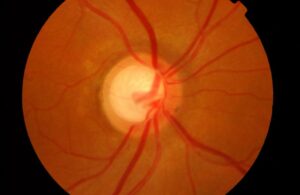Treatments
Trabeculectomy

¿Qué es la trabeculectomía?
Trabeculectomy is a drainage surgery we perform to lower intraocular pressure and, thus, slow down the evolution of glaucoma. When this pressure is too high, the optic nerve becomes compressed and damaged, which, in turn, causes progressive and irreversible loss of vision that can lead to blindness.
To try to avoid this, trabeculectomy seeks to open a new drainage route to allow the aqueous humour (intraocular fluid) to exit from the anterior chamber of the eye to the conjunctiva, hence creating a filtering bleb through a small hole we make in the sclera, the white part of the eye.
Enfermedades oculares que trata la trabeculectomía
We perform trabeculectomy when the treatment we administer in the form of hypotensive eye drops or in-office laser does not work and the intraocular pressure remains high, thus putting the optic nerve at risk. We also use this technique when, for different reasons, we cannot perform other less invasive surgical procedures, such as non-penetrating deep sclerectomy. Whether you have open-angle or closed-angle glaucoma, you may opt for this surgery.
Recovery
After trabeculectomy – an outpatient surgery which takes about 45 minutes and does not require admission or general anaesthesia (only local with sedation) –, you will receive antibiotic and anti-inflammatory drops to avoid postoperative infections and reduce eye inflammation. Your recovery will take place gradually throughout the month and a half following surgery and will require close monitoring by the medical team to ensure that you are progressing properly. During this time, it is normal for you to have blurred vision.
